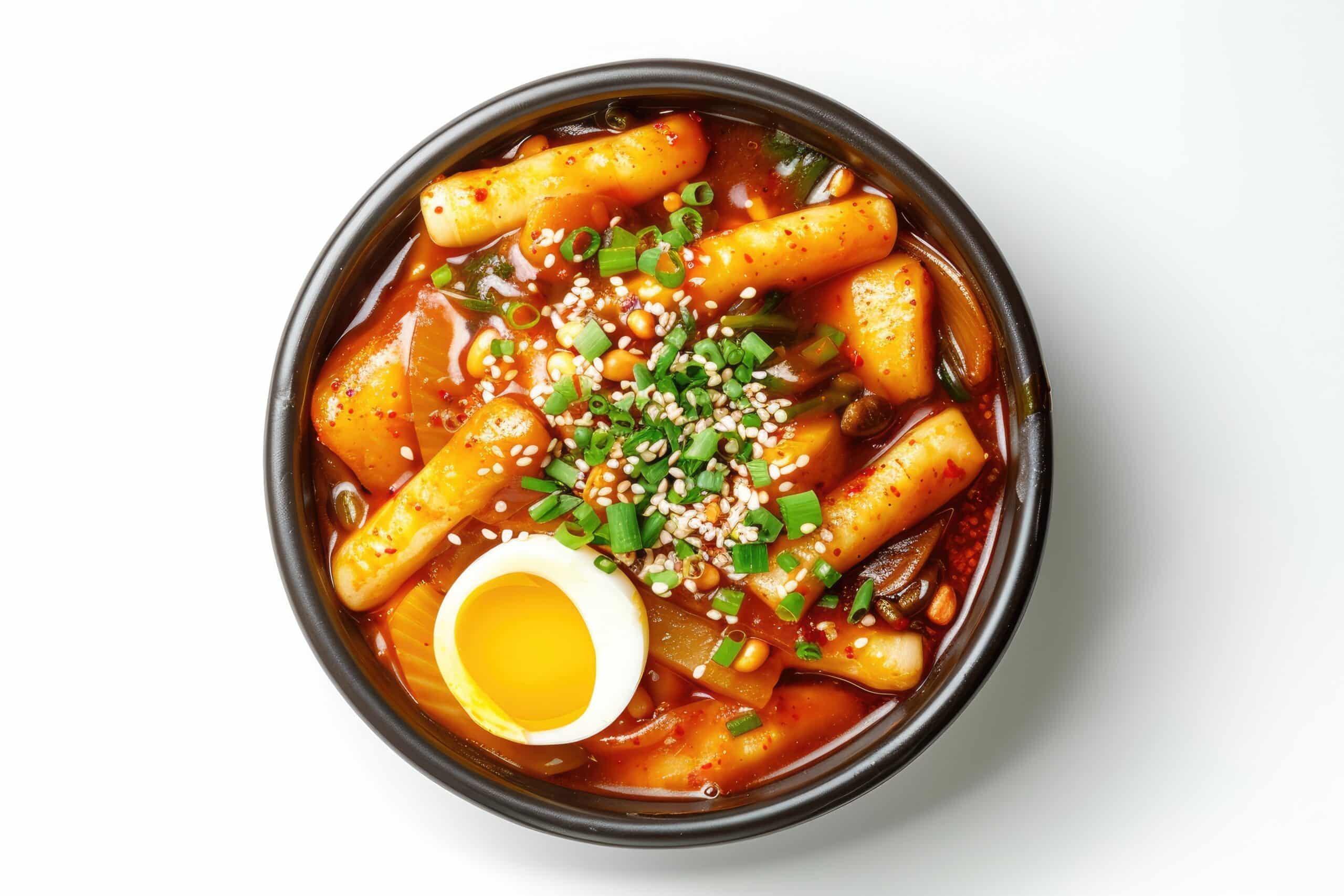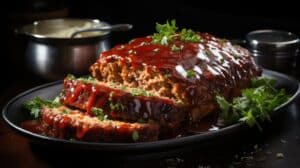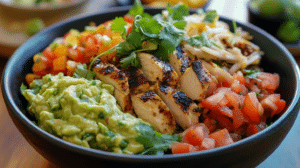Tteokbokki, a beloved Korean dish, is famous for its chewy rice cakes drenched in a spicy-sweet gochujang sauce. The key to perfecting this dish lies in selecting the right rice flour. In this article, we’ll delve into which rice flour is best for Tteokbokki, the science behind it, and practical tips to ensure you achieve the desired texture every time.
Types of Rice Flour for Tteokbokki
Choosing the right type of rice flour is crucial to making Tteokbokki. There are several varieties, each affecting the final texture of the dish differently.
Glutinous Rice Flour vs. Non-Glutinous Rice Flour
Glutinous Rice Flour, also known as sweet rice flour, is the preferred choice for Tteokbokki. Despite its name, glutinous rice flour does not contain gluten. Instead, it is called “glutinous” because of its sticky, glue-like consistency when cooked, which gives Tteokbokki its signature chewiness.
On the other hand, non-glutinous rice flour is made from regular rice and lacks the sticky properties of glutinous rice flour. Using non-glutinous rice flour in Tteokbokki will result in a texture more akin to overcooked rice, rather than the chewy consistency that’s characteristic of the dish.
For a detailed comparison of these types of flour, refer to this Tteokbokki Recipe, which highlights the importance of using the right flour.
Wet Rice Flour vs. Dry Rice Flour
Another factor to consider is whether to use wet rice flour or dry rice flour. Wet rice flour retains more moisture, making it ideal for achieving the desired chewiness in Tteokbokki. It’s typically found in the refrigerated section of Korean grocery stores. Dry rice flour can be used, but you may need to adjust the water content or soak it to achieve similar results.
Why Glutinous Rice Flour is Essential for Tteokbokki
The key to perfect Tteokbokki lies in the starch composition of glutinous rice flour. This flour is high in amylopectin, a starch that contributes to the sticky, chewy texture essential for Tteokbokki. When cooked, amylopectin forms a gel-like consistency, giving the rice cakes their characteristic chew.
Traditional vs. Modern Recipes
In traditional Korean cuisine, glutinous rice flour has always been the go-to for making rice cakes like Tteokbokki. Modern recipes continue this tradition, though some variations experiment with different flours or combinations. However, if you want to stick to the authentic taste and texture, glutinous rice flour is non-negotiable.
For those interested in trying out a traditional approach, you can explore this Garaetteok Rice Cake Recipe that uses glutinous rice flour.
Alternative Flours and Their Impact on Tteokbokki
While glutinous rice flour is the traditional choice, some cooks may consider alternative flours due to dietary restrictions or availability. Here’s how different flours can impact the texture and taste of Tteokbokki.
Brown Rice Flour
Brown rice flour is a healthier alternative to white glutinous rice flour. It retains more of the rice’s natural nutrients, including fiber and vitamins. However, it has a less sticky consistency, which can affect the chewiness of your Tteokbokki. To compensate, you might mix it with a small amount of glutinous rice flour or tapioca starch to achieve a similar texture.
Tapioca Starch
Tapioca starch is another alternative that can enhance the chewiness of the rice cakes. Often used in gluten-free recipes, tapioca starch can be mixed with glutinous rice flour to replicate the traditional texture of Tteokbokki. Tapioca starch helps create a stretchy, bouncy texture, a great substitute if you’re looking for gluten-free options.
Wheat Flour in Tteokbokki
Some modern recipes use wheat flour combined with rice flour to make Tteokbokki. While this isn’t traditional, wheat flour can add a different dimension to the texture, making the rice cakes slightly softer and more pliable. However, this alters the taste and mouthfeel, moving away from the authentic chewy texture provided by glutinous rice flour.
How to Choose the Best Rice Flour for Tteokbokki
Selecting the best rice flour for Tteokbokki involves more than just picking up a bag at the store. Here are some tips to ensure you get the right flour:
- Check the Label: Ensure you’re buying glutinous rice flour or sweet rice flour, not regular rice flour.
- Inspect the Texture: The flour should be fine and powdery, without clumps.
- Consider the Source: Flour from Korean brands is often preferred, as they are specifically processed for making rice cakes like Tteokbokki.
- Store Properly: Keep the flour in an airtight container in a cool, dry place to maintain its quality.
For more detailed guidance, check out the article on What is Tteokbokki Made Of?, which explains the ingredients and their importance in the dish.
Making Your Own Rice Flour at Home
If you’re unable to find the right type of rice flour or want to try making your own, it’s entirely possible to create glutinous rice flour at home. Here’s a simple guide:
Step-by-Step Guide to Grinding Rice Flour
- Choose the Right Rice: Use short-grain or medium-grain glutinous rice.
- Soak the Rice: Soak the rice in water for 4-6 hours to soften it.
- Dry the Rice: Drain the rice and spread it on a clean towel to dry for a few hours.
- Grind the Rice: Use a high-powered blender or food processor to grind the rice into a fine powder.
- Sift the Flour: Sift the ground rice to remove larger particles, leaving you with a smooth, fine flour.
Storing Homemade Rice Flour
Store your homemade rice flour in an airtight container in the refrigerator to keep it fresh. It’s best used within a few weeks since it doesn’t contain preservatives.
FAQs About Rice Flour and Tteokbokki
Can I Use Regular Rice Flour Instead of Glutinous Rice Flour?
Using regular rice flour will result in a less chewy texture, making the Tteokbokki more similar to overcooked rice. For the authentic chewiness, glutinous rice flour is essential.
Why Does My Tteokbokki Fall Apart?
If your Tteokbokki falls apart, it could be due to using the wrong type of flour or not kneading the dough enough. Ensure you use glutinous rice flour and knead the dough until it reaches a smooth, elastic consistency.
How Can I Make My Tteokbokki Chewier?
To make your Tteokbokki chewier, try adding a small amount of tapioca starch to the dough. This will increase the elasticity and give the rice cakes a more bouncy texture.
What Are the Best Substitutes If I Can’t Find Glutinous Rice Flour?
If you can’t find glutinous rice flour, a mixture of tapioca starch and regular rice flour can be used as a substitute. However, the texture will not be exactly the same as with traditional glutinous rice flour.
Is There a Gluten-Free Option for Making Tteokbokki?
Yes, glutinous rice flour is naturally gluten-free, making it an excellent choice for those with gluten sensitivities. Additionally, tapioca starch is also gluten-free and can be used to enhance the texture of your Tteokbokki.
Common Mistakes to Avoid When Using Rice Flour
When using rice flour to make Tteokbokki, avoid common mistakes that can affect the final texture:
- Over-Kneading or Under-Kneading the Dough: Kneading the dough just enough to form a smooth, elastic consistency is key. Over-kneading can make the dough tough, while under-kneading will prevent the rice cakes from holding together.
- Using Old or Improperly Stored Rice Flour: Rice flour can lose its freshness if not stored properly. Always store it in an airtight container in a cool, dry place.
- Not Soaking the Rice Cakes Properly Before Cooking: If you’re using store-bought rice cakes, soaking them in warm water before cooking is crucial to achieving the right texture.
Recipes and Variations Using Different Rice Flours
Once you’ve mastered the basics, start experimenting with different recipes and variations of Tteokbokki using various rice flours.
Traditional Tteokbokki Recipe Using Glutinous Rice Flour
- Ingredients: Glutinous rice flour, gochujang, soy sauce, sugar, garlic, and sesame oil.
- Instructions: Mix the flour with water to form a dough, roll it into cylindrical shapes, and boil until cooked. Prepare the sauce separately and combine it with the rice cakes.
Healthier Tteokbokki with Brown Rice Flour
For a healthier version, substitute some of the glutinous rice flour with brown rice flour. This version will have a slightly nuttier flavor and a bit less chewiness.
Fusion Recipes: Mixing Rice Flour with Tapioca or Wheat Flour
Create a fusion Tteokbokki by mixing glutinous rice flour with tapioca starch for extra chewiness, or try adding a small amount of wheat flour for a softer texture.
Conclusion
Choosing the right rice flour is essential for making perfect Tteokbokki. While glutinous rice flour is the traditional and preferred choice for its chewy texture, there are other alternatives you can experiment with depending on your dietary needs or ingredient availability. Understanding the role of rice flour will help you create the best Tteokbokki every time, whether you stick to the classic recipe or try new variations.
For more in-depth guides and recipes on making Korean dishes, be sure to check out the resources mentioned earlier and explore other cooking tips online.





